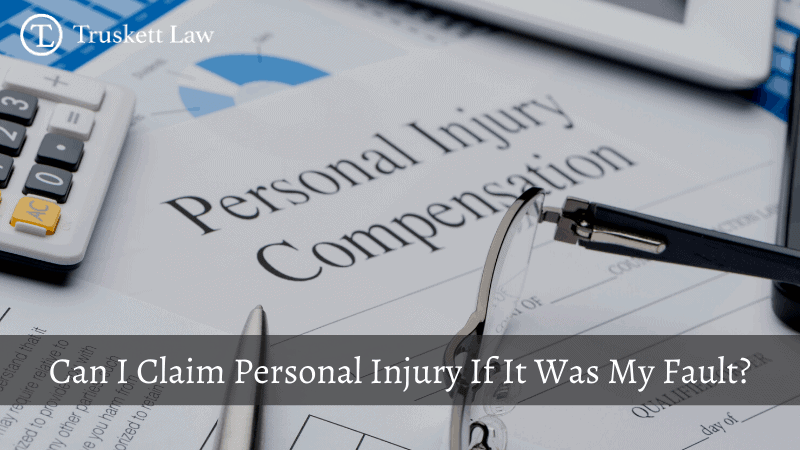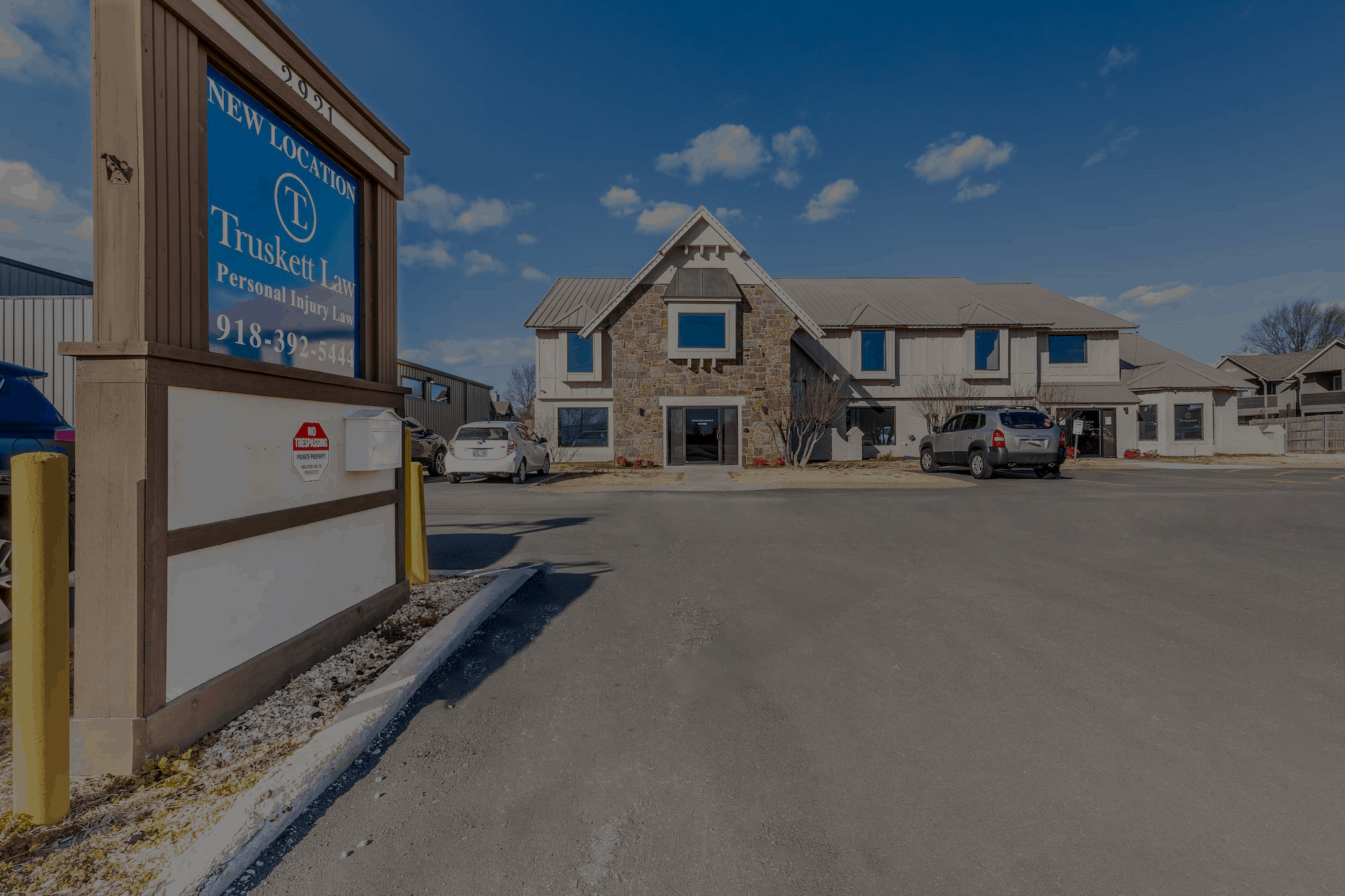
02 Feb Can I Claim Personal Injury If It Was My Fault?
Can I Claim Personal Injury if an Accident Was My Fault?
So, you’ve been involved in a personal injury accident and been injured. However, unfortunately, it’s your fault. Everyone makes mistakes when behind the wheel. Whether you were temporarily distracted by others in the car or accidentally ran a red light, these can sometimes lead to severe accidents or injuries. What do you do? If you need substantial medical care, that’s going to cost you. You may be feeling like you’re entitled to compensation. Can you file a case?
So, can you claim personal injury if the accident was your fault? In short, yes, you can file a personal injury case even if an accident was your fault, provided you have the proper coverage. However, you must know what your coverage policy is before you need it.
At-Fault vs. No-Fault
While you are required to have insurance, some laws vary from state to state regarding who has the right to sue. There are two different types of liability laws that states fall under. The two differences between the two policies are whether the victim has the right to sue and who pays for the injured party’s damages.
No-Fault
No-fault liability laws allow motorists to purchase a no-fault insurance policy. Through no-fault insurance, each insurance company compensates its policyholder for minor injuries regardless of who is at fault. This type of policy does provide a limited right to sue. You can sue for non-economical damages.
However, depending on the state and how they recognize no-fault insurance policies, they may have established different thresholds for the minimum damages needed to file a claim. The minimum could be expressed as a number like $250,000 or in terms of physical injury severity.
Although, in many no-fault insurance claims, the process doesn’t involve litigation. Each victim receives payments for their medical expenses and lost wages. In some states, the insured individual must use their insurance coverage while the insurance coverage pays the remainder.
Some states require victims to cooperate with insurers to provide a recorded statement to the insurer or attend a medical examination. In these instances, if the victim doesn’t cooperate, the insurer may have reason to terminate the no-fault benefits.
At-Fault
The majority of states function under the at-fault law system regarding insurance, based on tort law. This means that each insurance company pays for damages sustained according to each party’s degree of fault. Oklahoma is an at-fault state.
According to the Oklahoma Insurance Commission, all drivers must carry a certain amount of car insurance in case of an accident. If you are involved in an accident with an uninsured at-fault driver or someone who doesn’t have enough insurance to cover the cost of damages, your insurance may be able to cover your expenses. In at-fault states, insurers will investigate who caused the accident. The insurance companies will then pay for damages based on who is found to be at fault.
Comparative Fault
In some cases, more than one party is at fault for an accident. If a state still follows the idea of “contributory negligence,” then you are not eligible for compensation given that you share any of the blame.
In Oklahoma, the proportion of a driver’s fault is considered when determining fault. However, a threshold is set around 50% or 51%, usually depending on the state. The at-fault driver cannot get a payout unless they are determined to be “slightly negligent.”
Fault Defined
Liability, or fault, is legally defined as “neglect of care; an act to which blame or censure is attached. Fault implies any negligence, error, or defect of judgment.” Fault can be further described to “embrace a refusal to perform an action that one is legally obligated to do, such as failure to make a payment when due.”
You must understand that the court can rule that you can be just as responsible as the opposing party. When considered in the comparative fault rule, fault can be shared and is often measured as a percentage.
In some states, the damaged party can’t recover compensation if the fault is more than 50% or more, but if it’s 49% or less fault, they can recover, although it’s reduced by the degree of fault. For Oklahoma, the 51% Bar Rule is followed, meaning the damaged party cannot recover if it is more than 51% or more at fault. If the damaged party can recover if it’s 50% or less at fault, the recovery is reduced by the degree of responsibility.
You can read more about how to prove fault in a personal injury lawsuit here.
Who Determines Liability
 The person who determines liability in a personal injury case can depend on the circumstances, but usually, if you are consulting with a Tulsa personal injury attorney, they’ll investigate your case. When they investigate, they’ll discover all the potential at-fault parties, decide, and then present your case to the other side or the court.
The person who determines liability in a personal injury case can depend on the circumstances, but usually, if you are consulting with a Tulsa personal injury attorney, they’ll investigate your case. When they investigate, they’ll discover all the potential at-fault parties, decide, and then present your case to the other side or the court.
Often, liability can be covered by liability insurance. This leaves it up to insurance companies to pay damages or compensation. Insurance companies will usually conduct a separate investigation and make a liability determination. If the parties cannot agree on who is at fault, you may decide to file a personal injury lawsuit. This will give a civil court jury the final say as to who is at fault.
Any investigation will involve collecting evidence, interviewing witnesses and all involved parties, and consulting with and hiring experts. Typical evidence includes police reports, documents, and records kept by all parties, and witnesses and parties’ statements.
Legal Liability
For almost all accidents, legal liability is determined by negligence. If the injured person was where they weren’t supposed to be, or in a place where they should have expected the kind of activity that caused the accident, the person who caused it may not be held liable.
This is due to this person not having a “duty” to be careful or cautious toward the injured person. If the injured person was also careless, their compensation might be reduced depending on the extent of their carelessness. This is called comparative negligence.
If the negligent person caused the accident while working, the employer might also be legally held responsible. If an accident occurs on a dangerous property, either due to being poorly built or maintained, the property owner is liable for being careless with maintaining the property. This applies regardless of whether they caused the dangerous condition. If a defective product causes an accident, the product’s seller and manufacturer are liable. Even if the injured party doesn’t know which was careless, this still applies to both.
Other Methods of Proving Fault
Not all personal injury cases are caused by negligence. Someone can prove fault by establishing intentional conduct, proving “negligence per se,” or showing the case should be governed by the “strict liability” standard of proof.
Intentional conduct is done with the desired purpose or substantial certainty of the consequences. This can include personal injury cases that result from assault, battery, and similar behavior, which can lead to an intentional tort case.
Negligence per se can be applied when there is an unexcused violation of a statute. The defendant would be automatically liable for damages if the plaintiff’s injury is of the type the statute was intended to protect. An example would be if someone were injured due to reckless driving. Liability would likely be established using negligence per se.
Strict liability means the injured person doesn’t need to establish the defendant’s negligence. This is most often applied to product liability cases, but this can also apply to cases involving abnormally dangerous activities or the possession of wild animals. In a strict liability case, the defendant wouldn’t have to prove negligence to recover damages.
What to Do After an Accident
To protect yourself as much as possible, you should ensure you document everything as much as possible. You’ll want to ensure you cover as many details as possible and make sure everything is handled correctly.
- Contact the police and get an official accident report.
- Gather as much evidence as possible for your insurer. Gather photographs, witness testimonies, medical records, loss of wages, etc.
- Do not admit fault at the scene of an accident. There may be extenuating circumstances that you may be unaware of at the time of the accident. Leave the determination as to who is at fault up to the authorities and your insurance company.
Choose Truskett Law
Suppose you’ve had the unfortunate luck of being involved in an accident that has resulted in an injury. In that case, Truskett can help walk you through the legal process of filing a personal injury case and seek legal compensation. We understand how overwhelming an accident can be, as well as the lasting effects an accident can leave you with, and we want to be there for you.
So, why choose Truskett? Truskett Law is comprised of lawyers who serve the Tulsa community and have over a decade of experience practicing law. Truskett practices personal injury law exclusively. We’re dedicated to our clients and are passionate about legally advocating for you. We were founded on core values like community, safety, advocacy, and educating clients. Contact us for a free consultation and find out why we’re ranked Tulsa’s #1 Personal Injury Lawyer on Google Reviews.
Don’t risk it. Call Truskett.


Sorry, the comment form is closed at this time.